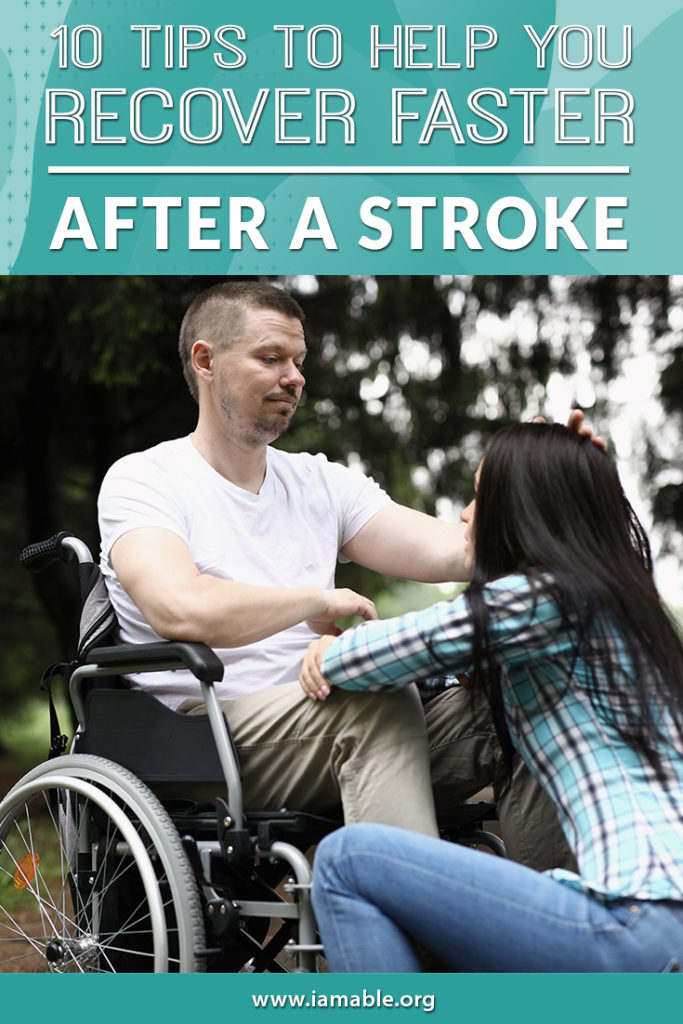Miami, FL 33186

In the aftermath of a stroke, activity-based therapy and other forms of rehabilitation may help to speed recovery. This can allow for the maximum amount of independence for the stroke survivor. Whether it is a loved one or you who have gone through this traumatic health experience, we hope our list of tips to help speed recovery provides benefits.
The temptation is to start out strong and then quit therapy once you see a little improvement or if advancement begins to slow. However, for optimal recovery, you need to stick with your rehabilitation program. Remember that a little regression may occur during the process. Don’t let this discourage you. Staying active will improve the quality of your life and may even increase your life expectancy following the stroke.
Being patient goes along with your consistency. Results may not happen overnight. Therefore, you need to be determined to keep up with your training and therapy in order to achieve the best results. As we will discuss later in the article, setting reachable goals as milestones in your recovery can help you stay focused and patient.
Physical therapy may be a traditional form of recovery, but it is still common because it works. A few benefits to think about when it comes to physical therapy include:
When combining these three factors, you can see how recovery advances rapidly. So please don’t underestimate the importance of this traditional form of therapy even though we are about to discuss some modern tech advances that will provide additional benefits in these same areas.
FES can help your physical therapist stimulate muscles that are weak or even paralyzed due to the stroke. This can get those muscles some much-needed exercise while at the same time helping your nervous system to rewire the function of those muscles. In combination with an FES bike, this type of activity-based therapy can boost the speed of your recovery and improve your overall outcome. Some cycles include an handcycle to get a workout for both the arms and the legs, thereby enhancing the benefits even further.
Locomotion therapy is a way to retrain your gait while also getting a good lower body workout. It is safe for patients of all ability levels because you don’t even have to be able to carry your own body weight. A harness helps to suspend you over a treadmill. An exoskeleton can perform some or all of the walking motion for you. It is a safe way to get walking exercise and even protects your physical therapist from having to absorb the impact if you were to stumble. At the same time, your nervous system is receiving retraining to walk with a typical pattern from this form of activity-based therapy.
The core muscles are those in the abdomen, lower back, and obliques. These muscles are crucial for stabilization and balance in the body. Therefore, exercises that improve your core’s strength are vital, especially to help reduce the risk of falls.
Another thing that will have a significant impact on your degree of independence is your ability to communicate. Therefore, if the stroke has impacted your ability to speak, speech therapy is an excellent way to restore as much communication as possible.
In the wake of a significant medical event, it is natural to experience some feelings of anxiety, sadness, or stress. You may be disappointed in how slow recovery is going. There could be fears of another stroke. Or you may be upset that you are unable to participate in certain hobbies you enjoy. Regardless of the feelings that you are working through, there is nothing wrong with discussing the use of medication or psychotherapy to mitigate the effects of post-traumatic stress. Proactively dealing with these feelings is a healthy way to counteract the stress that results from a health trauma. A failure to deal with these emotions may even stunt your recovery.
Realistic goals help you to see your progress, even if it is slow. This may assist you to be patient and stay consistent with your therapy. So reachable goals are a vital part of the stroke recovery process. Of course, you may have no idea what a reasonable goal would even be in your current situation. Therefore, this is something that you should work on with the help of your physical therapist, doctor, or another medical professional. While you want your goals to be reachable, be careful not to set your objectives too low, or you may not achieve your maximum results.
As you can see from our list to this point, activity-based therapy and mental preparation combine to play a significant role in patient outcomes regarding stroke recovery. In order to help you get into the right frame of mind for successful recovery, iAM ABLE offers the eBook 7 Unbelievably Important Steps to Take to Thrive after Paralysis. Whether you are dealing with some degree of paralysis due to the stroke or you have other debilitating symptoms, this book can help you to get into the right mindset for recovery.
Grab our free e-book 7 Unbelievably Important Steps to Take to THRIVE after Paralysis by clicking the image below.
